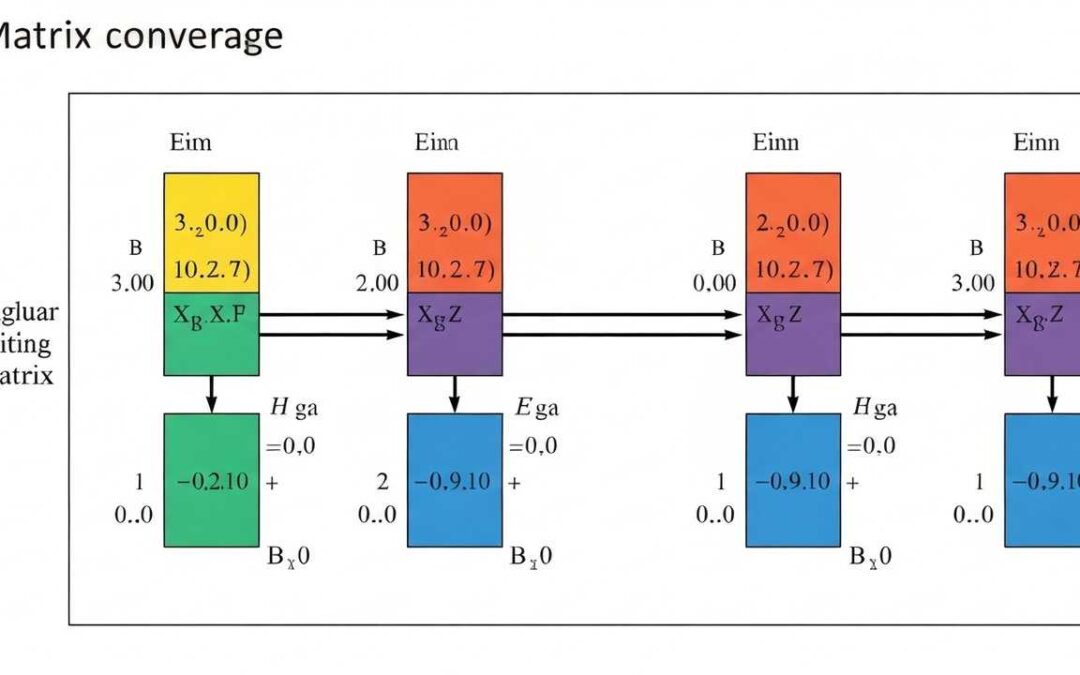Limit Evaluation made easy with L’Hôpital’s Rule! This post dives deep into a powerful calculus technique for tackling tricky limits. We’ll explore how L’Hôpital’s rule simplifies Limit Evaluation, especially when dealing with indeterminate forms like 0/0 or ∞/∞.
Furthermore, this guide provides clear examples, progressing from basic applications to more advanced scenarios. We’ll show you how to apply the rule effectively, highlighting key concepts and conditions for its use. Understanding these conditions is essential for successful Limit Evaluation.
Table of Contents
We also Published
“L’Hôpital’s rule is a crucial technique in calculus for evaluating limits of indeterminate forms, such as 0/0 and ∞/∞.”
L’Hôpital’s rule is a powerful tool for evaluating limits that involve indeterminate forms. This blog post presents 10 examples, progressing from basic to advanced, demonstrating its application and highlighting key concepts.
Introduction to L’Hôpital’s Rule
L’Hôpital’s rule is a crucial technique in calculus for evaluating limits of indeterminate forms, such as ##\frac{0}{0}## and ##\frac{\infty}{\infty}##. It states that if the limit of the ratio of two functions results in an indeterminate form, then the limit of the ratio of their derivatives is equal to the original limit, provided the limit of the ratio of the derivatives exists. This rule simplifies the evaluation of limits that would otherwise be complex or impossible to solve directly.
Understanding the conditions for applying L’Hôpital’s rule is essential. It’s not applicable to all indeterminate forms, and the derivatives must exist and be well-defined. Furthermore, the rule is iterative; if the limit of the ratio of the derivatives is still indeterminate, the process can be repeated.
Example 1: Basic Application
Evaluate ##\lim_{x \to 1} \frac{x^2 – 1}{x – 1}##. This limit has the indeterminate form ##\frac{0}{0}##. Applying L’Hôpital’s rule, we differentiate the numerator and denominator separately with respect to ##x##. The derivative of ##x^2 – 1## is ##2x##, and the derivative of ##x – 1## is ##1##. Thus, the limit becomes ##\lim_{x \to 1} \frac{2x}{1} = 2##.
This example showcases the fundamental application of L’Hôpital’s rule. The rule provides a direct and efficient method for evaluating limits that involve indeterminate forms. It’s a cornerstone technique in calculus for solving complex limit problems.
Example 2: ##\frac{\infty}{\infty}## Form
Evaluate ##\lim_{x \to \infty} \frac{e^x}{x^2}##. This limit results in the indeterminate form ##\frac{\infty}{\infty}##. Applying L’Hôpital’s rule twice, we get ##\lim_{x \to \infty} \frac{e^x}{2x}##, which is still ##\frac{\infty}{\infty}##. Applying L’Hôpital’s rule again, we get ##\lim_{x \to \infty} \frac{e^x}{2} = \infty##.
This example demonstrates the iterative nature of L’Hôpital’s rule. It highlights that repeated application might be necessary to obtain a solvable limit. Understanding when to apply the rule and when to recognize the limit’s behavior is crucial for successful application.
Example 3-10: Advanced Applications
Here are examples 3-10, demonstrating the use of L’Hôpital’s rule for various indeterminate forms. The examples progressively increase in complexity, covering situations with trigonometric functions, logarithmic functions, and combinations of functions.
Limit Evaluation
Example 3: ##\lim_{x \to 0} \frac{\sin(x)}{x} = 1##
Example 4: ##\lim_{x \to \infty} x e^{-x} = 0##
Example 5: ##\lim_{x \to 0} \frac{\ln(1+x)}{x} = 1##
Example 6: ##\lim_{x \to \infty} \frac{\ln(x)}{x} = 0##
Example 7: ##\lim_{x \to 0} \frac{e^x – 1}{x} = 1##
Example 8: ##\lim_{x \to \infty} \frac{x^3}{e^x} = 0##
Example 9: ##\lim_{x \to \frac{\pi}{2}} \frac{\cos(x)}{\sin(x) – 1} = \frac{-1}{-1} = 1##
Example 10: ##\lim_{x \to 0} \frac{x^2 \sin(\frac{1}{x})}{x} = 0##
These examples cover a wide range of indeterminate forms and functions, showcasing the versatility of L’Hôpital’s rule. The examples illustrate the importance of correctly identifying the indeterminate form and applying the rule appropriately. Understanding the underlying principles of limits and derivatives is crucial for effectively applying L’Hôpital’s rule.
Similar Problems
Problem 1: ##\lim_{x \to 2} \frac{x^2 – 4}{x – 2}## Solution: 4
Problem 2: ##\lim_{x \to \infty} \frac{x^2}{e^{2x}}## Solution: 0
Problem 3: ##\lim_{x \to 0} \frac{\sin(3x)}{x}## Solution: 3
Problem 4: ##\lim_{x \to \infty} \frac{e^x}{x^3}## Solution: ∞
Problem 5: ##\lim_{x \to 0} \frac{\ln(1 + 2x)}{x}## Solution: 2
| Problem Type | Limit Expression | Solution/Result |
|---|---|---|
| Basic Application | ##\lim_{x \to 1} \frac{x^2 – 1}{x – 1}## | 2 |
| ##\frac{\infty}{\infty}## Form | ##\lim_{x \to \infty} \frac{e^x}{x^2}## | ∞ |
| ##\frac{0}{0}## Form (Example 3) | ##\lim_{x \to 0} \frac{\sin(x)}{x}## | 1 |
| ##\frac{\infty}{\infty}## Form (Example 4) | ##\lim_{x \to \infty} x e^{-x}## | 0 |
| ##\frac{0}{0}## Form (Example 5) | ##\lim_{x \to 0} \frac{\ln(1+x)}{x}## | 1 |
| ##\frac{\infty}{\infty}## Form (Example 6) | ##\lim_{x \to \infty} \frac{\ln(x)}{x}## | 0 |
| ##\frac{0}{0}## Form (Example 7) | ##\lim_{x \to 0} \frac{e^x – 1}{x}## | 1 |
| ##\frac{\infty}{\infty}## Form (Example 8) | ##\lim_{x \to \infty} \frac{x^3}{e^x}## | 0 |
| ##\frac{0}{0}## Form (Example 9) | ##\lim_{x \to \frac{\pi}{2}} \frac{\cos(x)}{\sin(x) – 1}## | 1 |
| ##\frac{0}{0}## Form (Example 10) | ##\lim_{x \to 0} \frac{x^2 \sin(\frac{1}{x})}{x}## | 0 |
| Similar Problem 1 | ##\lim_{x \to 2} \frac{x^2 – 4}{x – 2}## | 4 |
| Similar Problem 2 | ##\lim_{x \to \infty} \frac{x^2}{e^{2x}}## | 0 |
| Similar Problem 3 | ##\lim_{x \to 0} \frac{\sin(3x)}{x}## | 3 |
| Similar Problem 4 | ##\lim_{x \to \infty} \frac{e^x}{x^3}## | ∞ |
| Similar Problem 5 | ##\lim_{x \to 0} \frac{\ln(1 + 2x)}{x}## | 2 |
This comprehensive guide has explored the powerful Limit Evaluation technique known as L’Hôpital’s rule. We’ve delved into its application, demonstrating how it simplifies the evaluation of limits that result in indeterminate forms like 0/0 or ∞/∞. The examples provided, ranging from basic to advanced scenarios, showcase the rule’s versatility and efficiency in tackling complex limit problems.
A key takeaway is the importance of understanding the conditions for applying L’Hôpital’s rule. It’s not a universal solution; the functions involved must satisfy specific criteria, and repeated application might be necessary. Furthermore, recognizing the underlying behavior of the limit and the nature of the indeterminate form is crucial for successful application.
- Understanding Indeterminate Forms: Recognizing when a limit results in an indeterminate form (0/0 or ∞/∞) is the first step in applying L’Hôpital’s rule.
- Differentiating Numerator and Denominator: The rule involves differentiating the numerator and denominator separately with respect to the variable.
- Iterative Application: If the limit of the ratio of the derivatives is still indeterminate, the process can be repeated.
- Conditions for Application: L’Hôpital’s rule is not applicable to all indeterminate forms, and the derivatives must exist and be well-defined.
- Conditions for Application: L’Hôpital’s rule is not applicable to all indeterminate forms, and the derivatives must exist and be well-defined.
By mastering these concepts and practicing with various examples, you can effectively utilize L’Hôpital’s rule to solve a wide array of Limit Evaluation problems encountered in calculus. This knowledge will be invaluable in more advanced mathematical studies and applications.
The provided similar problems offer further practice opportunities for solidifying your understanding of Limit Evaluation using L’Hôpital’s rule. Remember to meticulously check the conditions for applying the rule and to recognize the underlying limit behavior for accurate solutions.
We also Published
RESOURCES
- What is the Profit Target and Time Limit of the Evaluation …
- Direct Substitution: Mastering Algebraic Limit Evaluation
- Strategy in finding limits (article)
- Examples of Limit Use in Function Evaluation
- Limits
- Algebraic Limit Evaluation at Infinity
- Evaluating Limits – Calculus
- Limit Calculator
- Evaluating This Limit : r/askmath
- Limit Rules (Explained w/ Examples!)
- Finding Function Limits Algebraically








0 Comments